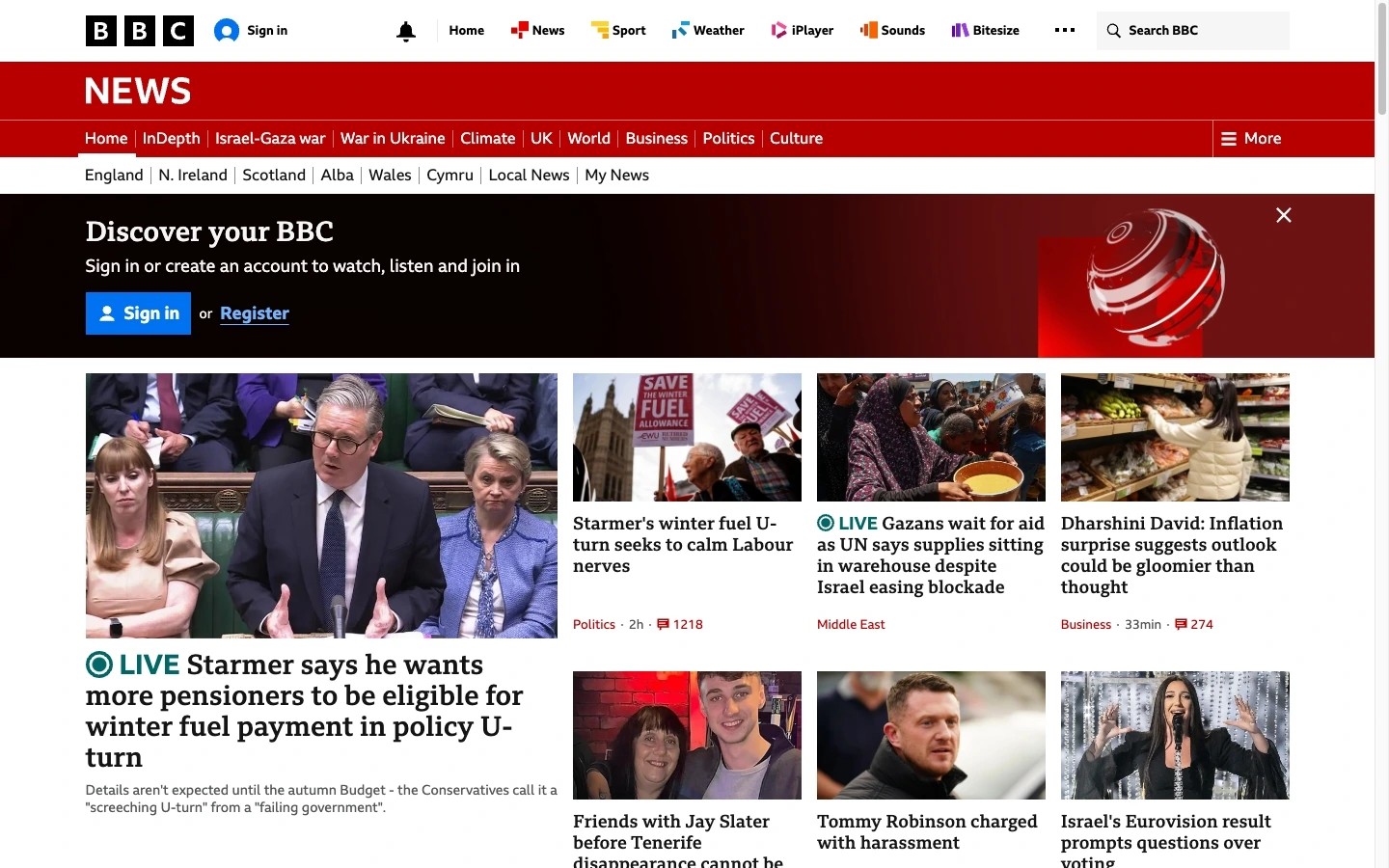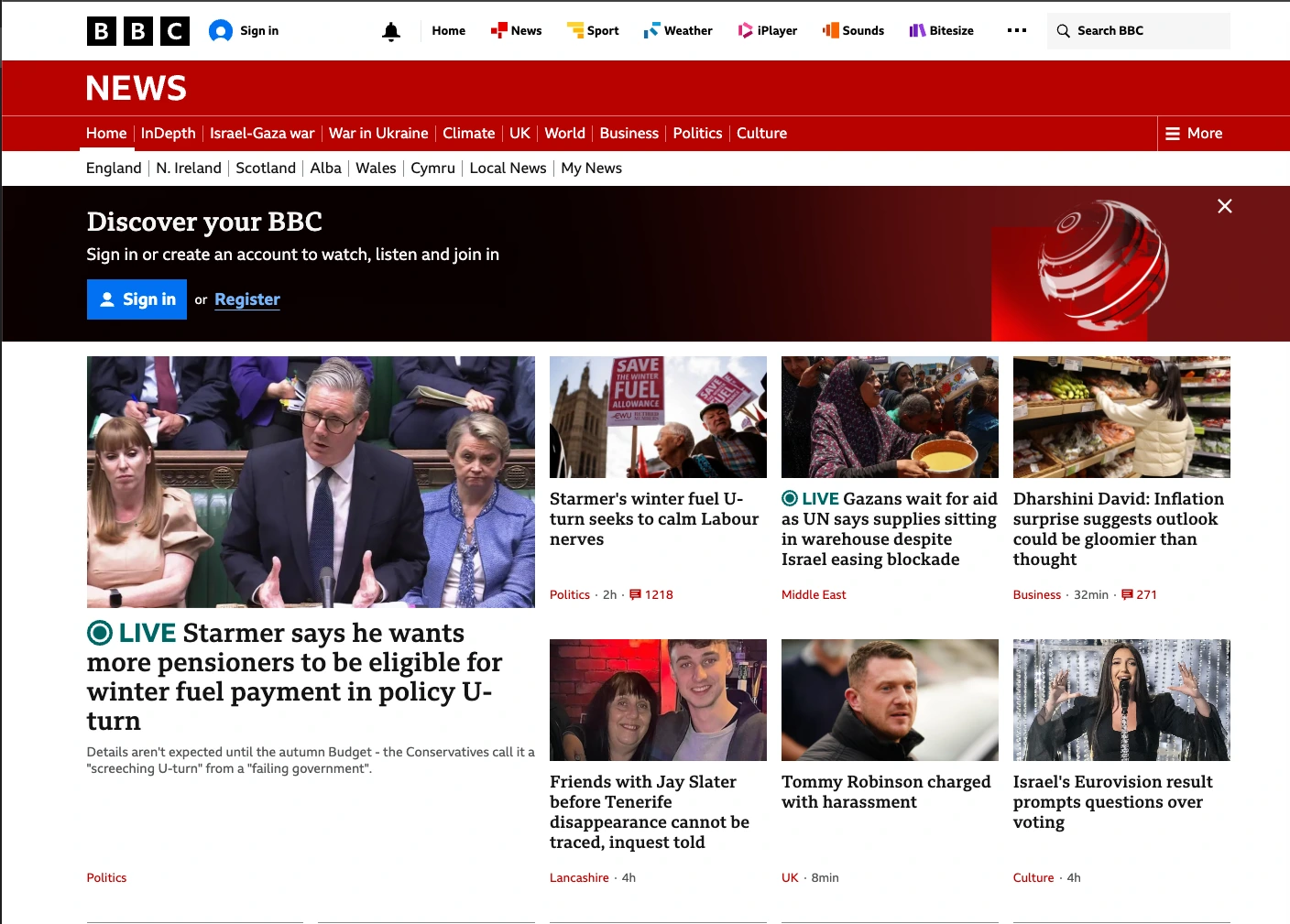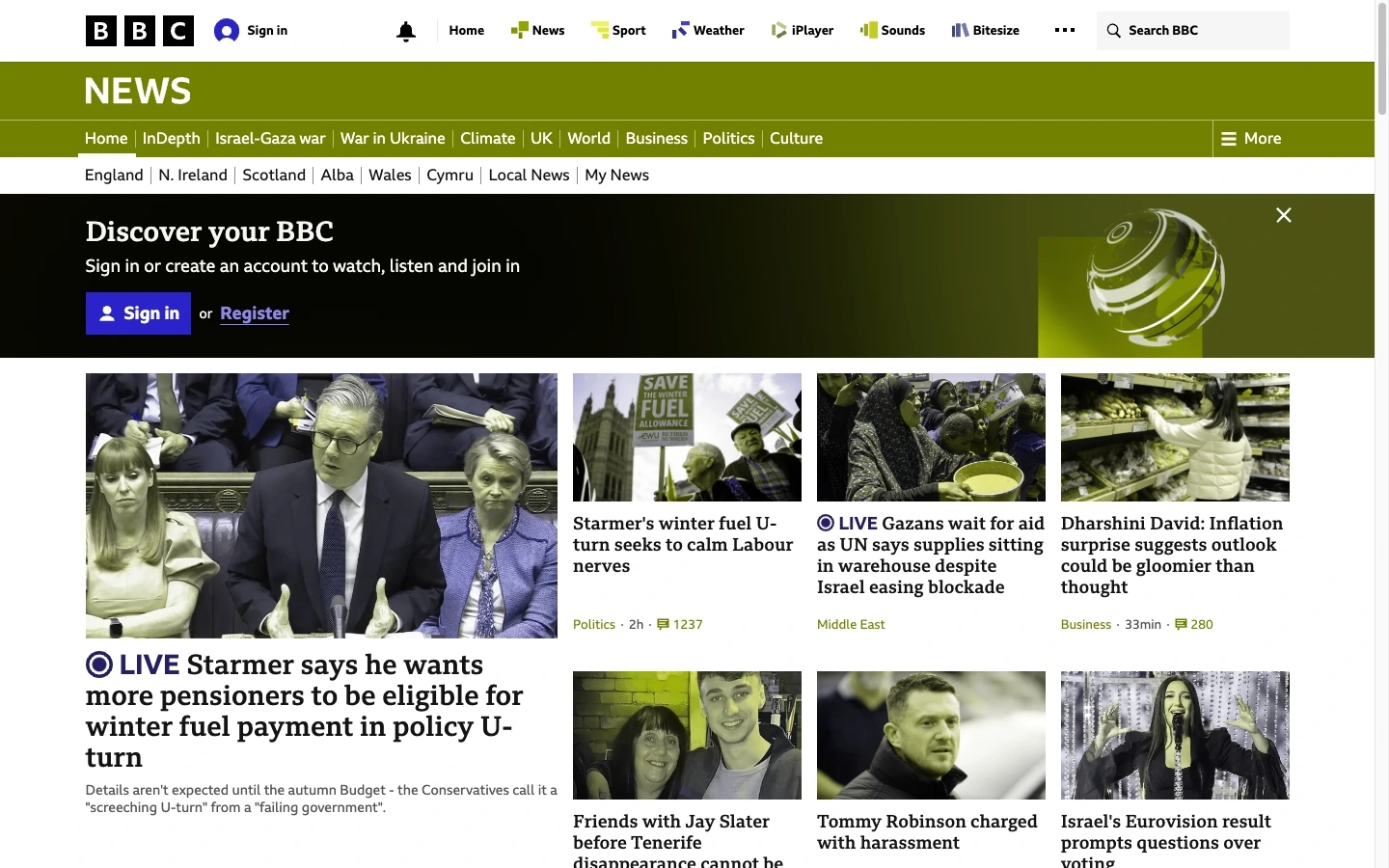
The right shows how a user with red-green colour blindness sees the BBC News site; the left shows it as seen without impairments.
Colour Blindness
Around 1 in 12 men and 1 in 200 women experience some form of colour vision deficiency, affecting how they perceive your website and brand. There are four main types — Protanopia (red), Deuteranopia (green), Tritanopia (blue), and Monochromacy (no colour vision). If your site relies solely on colour to convey meaning, key actions and messages can be lost. All the money you invest in branding and design can fall short if it's not accessible. Designing with colourblind users in mind ensures your digital products are clearer, more inclusive, and ultimately more effective whilst protecting your investment and strengthening your user experience.
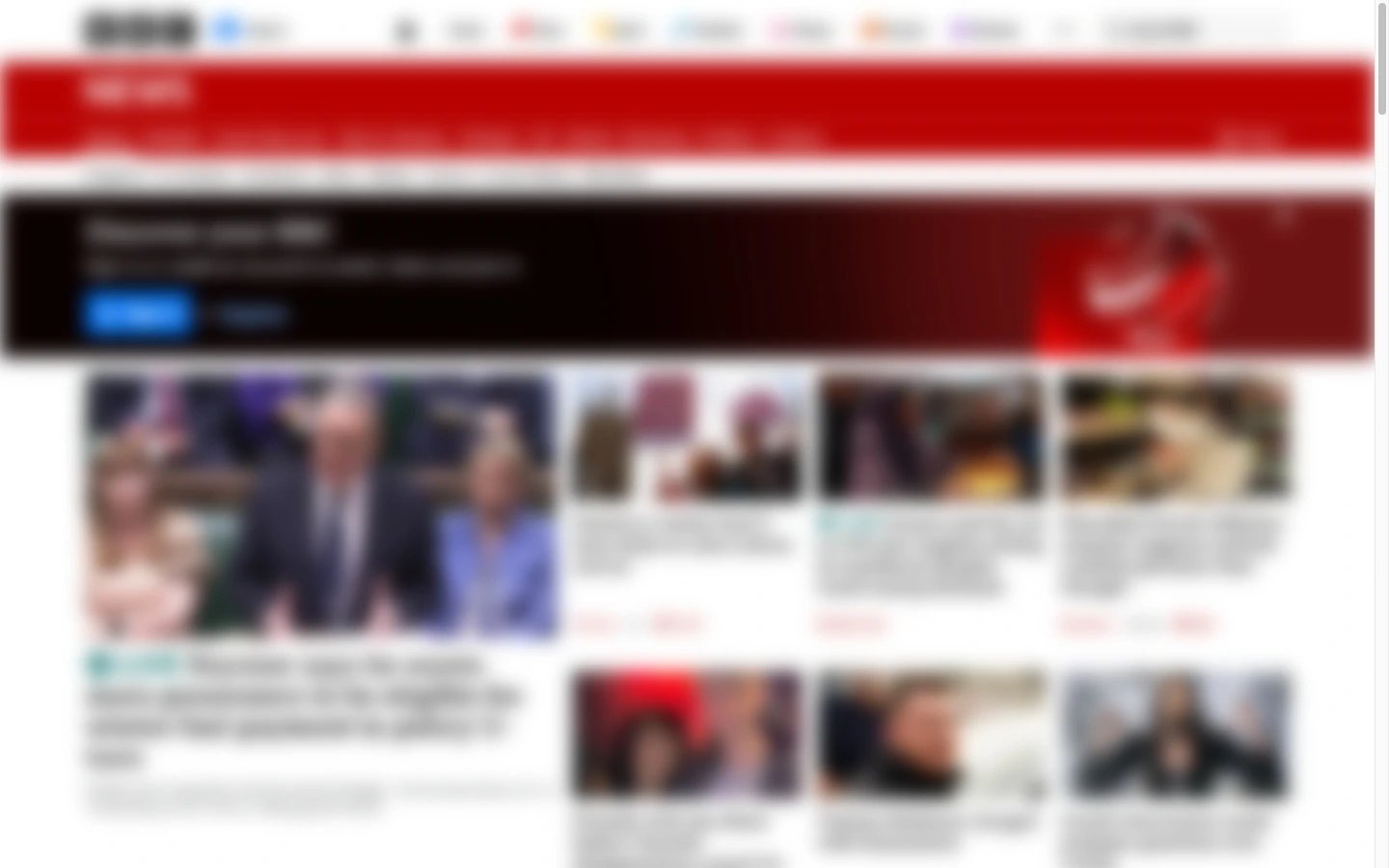
The right shows how a user with cataracts or other blurred vision perceives the BBC News site; the left shows it as seen without impairments.
Visual Impairment
Visual impairments affects over 2 million people living with sight loss or blurred vision in the UK. Not all individuals are officially classified as visually impaired, but many still struggle with small text, low contrast, or busy layouts. Conditions like cataracts can make your website appear blurry or unreadable. These users often rely on screen readers, text enlargement tools, or high-contrast modes just to navigate or make a purchase. If your website isn’t designed with accessibility in mind, you could be excluding a large audience and losing valuable customers in the process.
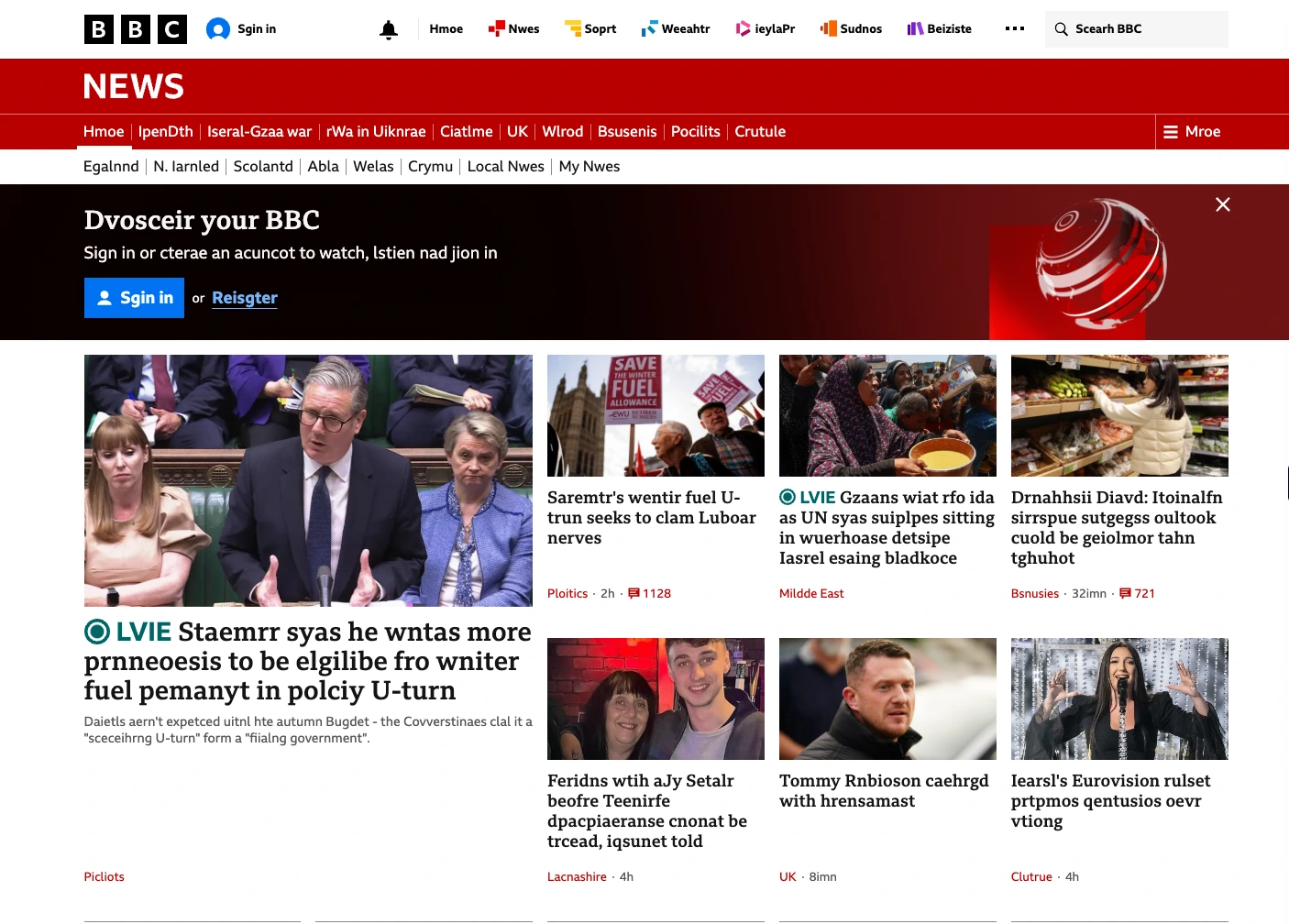
The right shows how a user with dyslexia perceives the BBC News site; the left shows it as seen without impairments.
Dyslexia
Dyslexia affects around 10% of the UK population, influencing how people read, process, and interact with text and it's no different to content online. Not all users identify as neurodivergent, but many still find dense copy, complex layouts, or certain fonts difficult to navigate. For some, large blocks of text can feel overwhelming or disorienting. These users often rely on tools like text-to-speech software, reading rulers, or dyslexia-friendly fonts to access content and complete tasks online.
Would you like to work together to create an accessible, user-friendly product - then let's chat?
